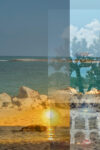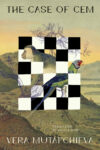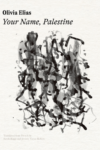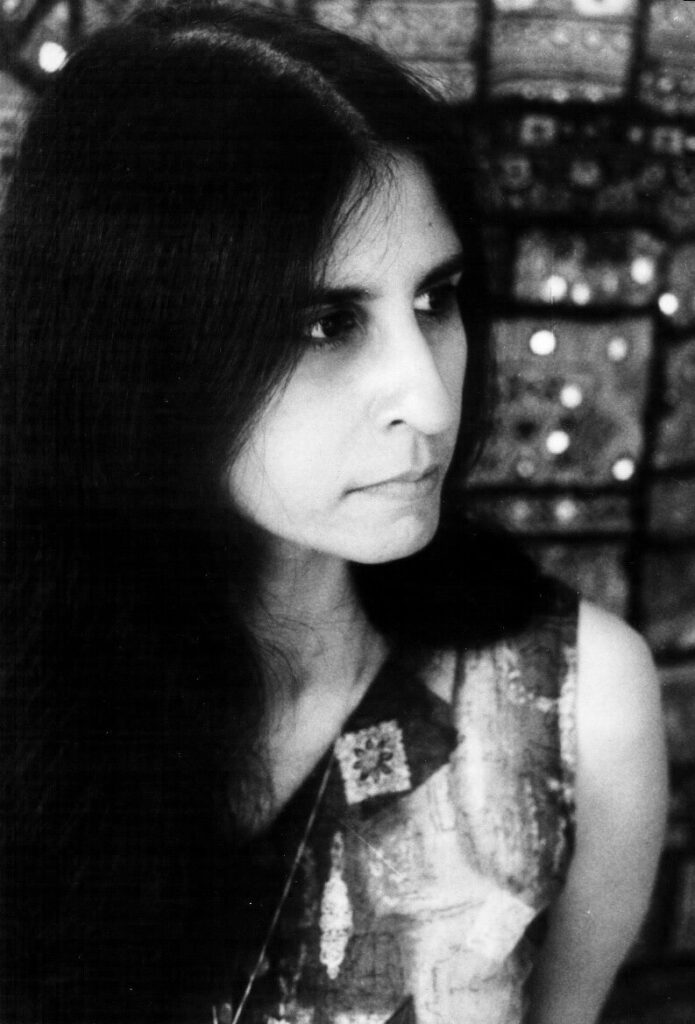
Uzma Aslam Khan’s most recent novel, The Miraculous True History of Nomi Ali, twenty-seven years in the making, is the first known fictional account of the Andaman Islands preceding and during the Second World War, when they were occupied by the British, then the Japanese. This meticulously researched, haunting work of historical fiction tells the human stories of those omitted from our collective memory of the tumultuous middle decades of the twentieth century. The novel was first released in India, where it was shortlisted for the Tata Literature Live! Best Book of the Year Award for Fiction 2019, and in Pakistan, where it won the 9th UBL Literary Awards English Language Fiction category 2020, as well as the Karachi Literature Festival-Getz Pharma Fiction Prize 2021. Also published in Sweden last year, the book is now available in the US and UK from Deep Vellum Publishing, and was one of the New York Times’ “Books for Summer 2022.”
Khan is the author of four previous novels, translated worldwide to critical acclaim. These include Trespassing, recipient of a Commonwealth Prize nomination in 2003; The Geometry of God, a Kirkus Reviews Best Book of 2009; and Thinner Than Skin, nominated for the Man Asian Literary Prize and the DSC Prize for South Asian Literature, and winner of the French Embassy Prize for Best Fiction at the Karachi Literature Festival 2014.
I met Uzma a few times at successive Karachi Literature Festivals and got to know her a bit better on social media. I was delighted then to conduct this interview with her about The Miraculous True History of Nomi Ali over email.
Claire Chambers: I understand that your novel The Miraculous True History of Nomi Ali has been a long time in the making. In fact, you have been thinking about it for twenty-seven years: pretty much the whole of your adult life and your writing life. Please could you tell readers a bit about the creation story behind the story and how this became such a slow-cooked and richly textured book?
Uzma Aslam Khan: It began with pulling the wrong book off a shelf. Flipping through it, I found a quote from the 1930s by a British politician describing a “prisoner paradise” to which Indian “terrorists” were banished with the intent to “sever them from creed, land, family, and everything held dear.”
He meant the Andaman Islands, which, as a child, I’d heard referred to as Kaala Pani, Black Water, to denote a place of absolute exile. But I knew little else. My schooling in Karachi was at a convent where the syllabus came from Cambridge University, and made no mention of British rule, of course. Finding that quote was like myself being banished to an island without memory.
For the next two decades, I looked for true histories of the penal colony. The little I found made brief references to women also being transported, without naming a single one. The first character that I wrote for The Miraculous True History of Nomi Ali was the woman prisoner. She’s not only the first character for this book, but for any published novel, since this, though completed last, began before all the others. She is identified only by a number and letter that prisoners had to wear on a wooden tag around their necks. Hers was 218 D, because I was born a day later, on February 19. The letter is for “dangerous.”
During the twenty-seven years it took to make the novel, I also learned of the Japanese occupation of the islands. I then knew that the story I’d been writing was about a dual occupation. The first shot fired against the Japanese on South Andaman Island was by a boy who was trying to save a chicken. This historical event frames the first chapter, as well as the next two sections. My character Zee is based on the boy. Priya, on the chicken. The titular character, Nomi, is Zee’s sister and entirely made up. When I found Nomi, the book found its momentum. The prisoner began the book and Nomi completed it.
I want to ask next about technique. In the novel you’ve created many diverse strands within a complex structure, reflecting the many rather than just a single story. How do you hold together all those strands? It’s very impressive. I wonder if you could share what your thinking was in terms of structure. You briefly write about kintsugi: “the art of repair […] visibly featuring the repair, instead of concealing it […] The result is more precious than the original. Damage is illuminated as a necessary event in life, instead of a reason to reject life.”
Might kinsugi as the beautiful piecing together of history’s fragments work as a metaphor for your own techniques in this novel? I’m thinking here of Derek Walcott’s Nobel Prize acceptance speech from 1992, “The Antilles: Fragments of Epic Memory,” in which he writes:
Break a vase, and the love that reassembles the fragments is stronger than that love which took its symmetry for granted when it was whole. The glue that fits the pieces is the sealing of its original shape. It is such a love that reassembles our African and Asiatic fragments . . .
This quote seems to me very suggestive for your own historical and aesthetic project; do you agree?
Claire, thank you for drawing my attention to Walcott’s wondrous speech. I hadn’t read it before. Yes, absolutely, it speaks to my own making of the many strands and their piecing together. I didn’t choose to write it this way, though. The book decides. I was working with a wide cast of characters from different geographies, so the structure took a while to reveal itself. Nor was I aware of the multiplicity till I was done. It was my Indian publisher who first pointed out that there were characters from what was to become Pakistan, India, and Bangladesh, as well as from Burma, and from across languages and faiths. Maybe because of all the geographies that I carry within me, and all the fragmented languages and histories as well, lateral thinking and imagining seem to be where I go.
I don’t have a clear understanding of how I tap into the different voices. Each character appears first in an image—visual or spoken. So the prisoner’s story began with letters from her family. Nomi’s with the chicken being chased by the Japanese. These seeds—or fragments—took shape from early scribbles that were more like sketches. It is a visual process, and I agree so deeply with Walcott’s celebration of the love that goes into this assembling and reassembling, and agree too that it is “stronger than the love which took its symmetry for granted when whole.”
Your question, and his quote, remind me of a scene between two characters in the book, one of whom is lamenting that the British never took their shoes off before entering a temple. I took my shoes off many times in the years it took to write the book, but, for at least half of that time, I wasn’t given entry. I’d come with love and devotion, take my slippers off, wait at the door. But no entry, not till I found Nomi. These rituals are acts of faith. That is what writing is for me.
The Australian convict narrative is a familiar subgenre. However, the Andaman Islands as both an imaginative geography and a colonial penal colony are much less well known. Why did you want to write about this region, and what did you hope readers would take away from your fictional rendering of the Andamans in general and Ross Island in particular?
The parallels with Australia occurred to me—yes, those are better known convict narratives. I was, and still am, more drawn to the less well-known. What’s more, although as a fiction writer my training is to put myself aside, the wider story of my book necessitates sharing more here of my life.
My father’s family were refugees of the 1947 Partition. Though he didn’t talk about the violence, we know of intergenerational memory and silence, and that somewhere in its layers, children are made and language is learned. I learned that his family were from Indian Punjab, had to flee for the Pakistani side, and that he was deeply scornful of the mess of borders—borders drawn by the British.
My generation is the first to be born in Pakistan. The immensity of this, existentially, occurred to me only while writing this book. What does it mean to be the first generation born in a new country, on very old and beautiful land still reeling from colonialism and Partition? There was no map, and still isn’t, for how to contextualize my place in this tumultuous history. Perhaps I believed I had to go before Partition. I had to know our common history, and assert my right to it, because what happened on those islands is not only Indian history. It’s ours—South Asian, British, Japanese, and world history.
In terms of my hopes, well, I’d invite readers to come with openness, with compassion. To not dismiss this as a “remote” history or past that is “over.” I mean, look at us today. We never freed ourselves of fascism. Women’s bodies are still a battlefield. Children like Nomi are still caught in the crossfires. The lives of people from the Global South are still being erased. Consider too the staggering rates of incarceration, and there’s an urgent need for conversations on prison abolition in the West to include the carceral legacy of empire and colonialism worldwide. Another reader recently mentioned that the book is vital to our understanding of why we can’t speak of climate justice and reparations without colonial reparations, and vice versa. I liked her reading. For me, this story, for each of the twenty-seven years it took, has always been of the moment. Equally, if not more, I hope people would find themselves immersed in the characters and the language.
Of course, the main thing about islands is that they are surrounded by water. While I was reading your novel, I kept getting the sensation of water. You evoke the sea, rivers and frequent cyclones on the islands. Indeed, early on in the novel, protagonist Nomi learns the names of several bodies of water:
The Arabian Sea. The Andaman Sea. The Bay of Bengal, which was not a sea but part of a sea. The Indian Ocean, with too many bays to name. The Pacific Ocean, around the corner. She recited these names again. Nomi was the keeper of seas that flowed into each other, into her bowl. Bodies of land, on the other hand, did not flow into each other, she could not collect them.
How did you go about writing about this littoral world?
It has helped to live on different islands. As a child, in the Philippines, Japan and Britain. As an adult, on Oahu, in Hawaii. I’ve lived in every place that plays a role in the book—Japan, England, even Hawaii—except the one that both my parents were born in, India.
But coming back to your question about the sensation of water, I’m glad it was ever-present for you. There’s something about being on an island that shifts how we experience time. For instance, Oahu is where Pearl Harbour is located, yet the monument seemed further away than my memories of Tokyo, where I’d apparently spoken a little Japanese (since forgotten). Like many South Asians, Japan for me was “haute Asia”—art, ceramics, fine cuisine. It was beauty and elegance, politeness and hospitality. I had happy memories of Tokyo, especially of a man who helped me to steal my first rose for my mother. The Japanese characters in my book, particularly the dentist-spy Susumu San and Dr. Mori, came to me in a flash. With Susumu San, I saw him riding a bicycle one day, and barely had to revise his sections. I have often wondered if he was a version of the man who helped me to steal the rose.
On Oahu, other images came close, including of my family resettling in Pakistan after leaving Japan and England. In Karachi, our house was near the sea. Though I couldn’t see it, I could smell the sea. I could feel the shifting winds (perhaps like my character Aye). This was during the Cold War, when the US fought the Soviets in Afghanistan through Pakistan. Though at one time Karachi had been a fishing village, the city that I grew up in, where I could hear and feel the sea, became a battleground. And the battle was happening on land, not water. Yet, while writing this book in Hawaii, I seemed to fly to an in-betweenness where borders are mapped by water. Possibly, this allowed me to find a language for characters who exist between empires and seas.
Lastly, water carves rock. You can see that happening on an island, including to yourself. You stand in or by the ocean and are shaped. The body, like a sedimentary rock—in my case, one composed of Indian, Pakistani, American, and possibly many more layers—begins to yield. To quote Bruce Lee, to be water. For a writer, this surrendering is essential.
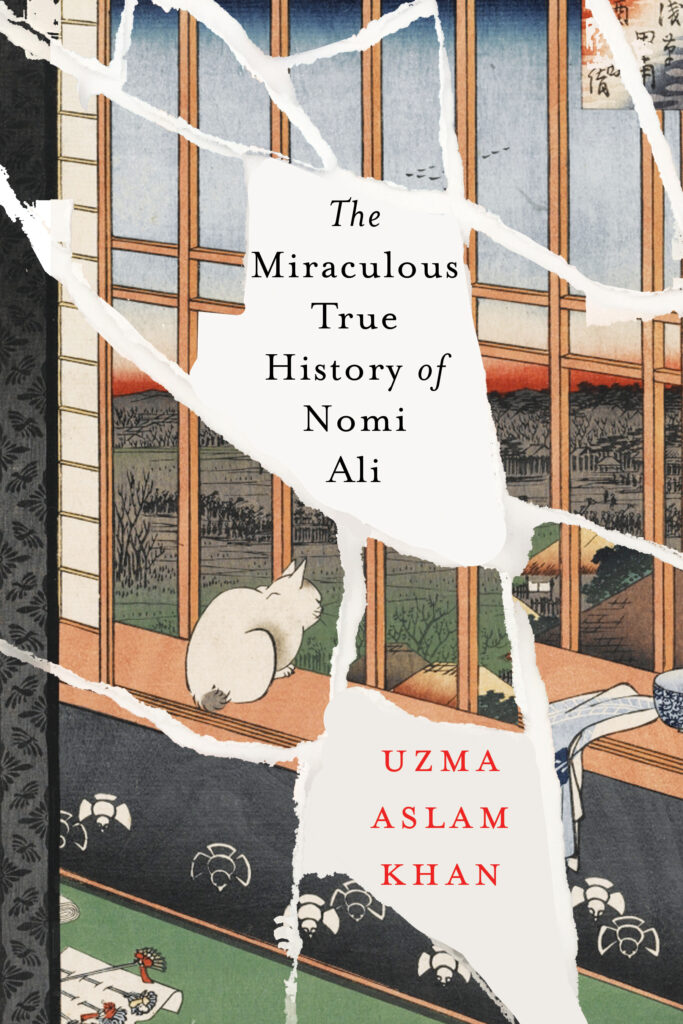
Another important dimension of the novel is that Nomi Ali and her family are originally from Lahore even though they now live on the Andamans. The Miraculous True History of Nomi Ali touches on calls from India’s Muslim League for a separate state of Pakistan, and then the build-up to the violent and traumatic Partition of 1947. Talk of a divided India and the creation of the new state of Pakistan seems like an “unbelievable picture” to Nomi. So much has been written about Partition that it is interesting to see it at the margins of this novel, part of a much wider tide of violence and division instigated by colonialism. Please speak to this.
Yes, toward the end of the book, I touch upon Partition, when refugees come to the islands. It may appear at the margins, but margins for me are essential. The Andaman, too, have existed at the margins, and this book centers them, which few novels have done. Other books have centered Partition (and very well). Perhaps, for me, coming to Partition after detailing what came before, somehow better approached the fullness of erased history. I don’t think even South Asians have grasped the enormity of these collisions—of Partition happening so soon after the end of the war, of the violence of colonialism, war, and Partition, all. Like the prisoners and their children, the refugees who came to the islands were asking what happens to the living with the death of the past. There was scarcely the time or space to grapple with that question, and we still haven’t. I realized when writing that line in the book that I’d been carrying it around with me for most of my life, and my parents and grandparents must have been carrying it as well.
You know, though my father never spoke of the violence of Partition, his mother did. She told me of the killing of her parents during the riots, in a village near Firozpur, now in Indian Punjab and very close to the border. My grandfather, like Haider Ali’s father, was a hakeem, or practitioner of herbal medicine. What happened to Nomi’s father (who was not from Lahore but Jalandhar, now also in Indian Punjab), turned into an inversion of sorts of mygreat-grandparents’ Partition story. And there was something about reaching that point in the book. I won’t say more, as I don’t want to give spoilers, but I’ll say that something changed in me, completely unplanned. Some confusion, some pain, shifted in some small way—almost like a muscle finally being kneaded. Somewhere there is a Sikh or Hindu woman whose great-grandparents were killed in an identical way as my Muslim grandparents. Because that is colonialism. It is less about who and more about what—about the structures that allow patterns of abuse and power to perpetuate. Reversing ethnicities and removing intent through story felt truer than the actual truth. It also felt true to do so in a book set on an island where people of multiple faiths were brought together through transportation that was intended to “sever prisoners from creed, land, family, and ‘everything held dear’.”
“Children narrators,” argues the critic Sujala Singh, “function as bridges, as interpretive filters informing and educating the reader about violence ‘out there’.” The use of a child narrator is fairly widespread in talking about violent events in such South Asian novels as Indian Arundhati Roy’s The God of Small Things. How does your portrayal of children go beyond children narratives, shading into the Bildungsroman and with the multiperspectival outlook I mentioned at the start? Also worth discussing may be the emphasis on animals as well as children, especially the chicken Priya.
This isn’t the first book of mine in which children play a major role. The Geometry of God, for instance, has Mehwish, who for much of the book is a first-person child narrator. However, in The Miraculous True History, you are right: there are three, Nomi, Zee, and Aye. One of possibly many differences that I see with other children narratives (including Roy’s, which I love) is that in mine, all three are Local Borns, by which I mean, the descendants of prisoners. I mentioned earlier that mine is the first generation to be born in Pakistan. Nomi and Zee (though not Aye) are the first generation in their family to be born in the Andaman. The children are also displaced, even if the parents may be too grief-stricken by their own losses to see it. Both generations are then again displaced during the war. The children know these many absences and erasures, as well as those inherited from their parents, but, I want to stress, the children also know friendship and tenderness. They turn to each other. They have an intuition for how.
Also, though silenced, Nomi, Zee, and Aye aren’t mere passive recipients of decisions made by adults. There’s a way in which the children become entangled, as children do everywhere, through seemingly benign acts, in larger events with more serious consequences. They become and are made accomplices—in harmful and helpful ways. Without giving away too much: Nomi and Aye play a direct role in what happens to the prisoner. Nomi because of actions to do with her mother, and Aye because he works for Mr. Howard, the British superintendent of the jail. How the lives of Nomi, Aye, and the prisoner intersect becomes an important strand of the book, and of that multiperspectival quality.
As to Priya, thank you for mentioning her! The interconnectedness between human and non-human is an essential, living thing for me, and we know it is threatened by the colonial project. There is an understanding and love in many of my characters, both human and more than human, for that thing, that wildness, inside each of us—the thing that resists. It is in Priya the chicken, too.
Claire Chambers is Professor of Global Literature at the University of York, with a particular interest in the literature of the Indian subcontinent and the “Muslim world.” She has published widely in such journals as Interventions, Journal of Contemporary Chinese Art, Contemporary Women’s Writing, and the Journal of Postcolonial Writing. Her latest edited volume is an anthology of food writing from Muslim South Asia, entitled Dastarkhwan in the UK (Beacon Books, 2021) and Desi Delicacies in India (Picador, 2021). She was Editor-in-Chief of the Journal of Commonwealth Literature, which she edited for over a decade. Her research has been supported by grants from HEFCE, the AHRC, ESRC, British Academy, and Leverhulme Trust. She is a Fellow of the Royal Society of Arts.
This post may contain affiliate links.





